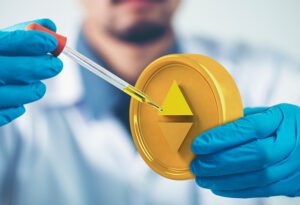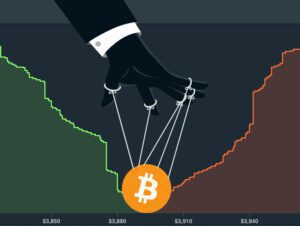
Table of Contents
ToggleEthereum 2.0… it’s not here yet, but we continually find ourselves theorizing or speculating about the big upgrade to the second largest network in terms of market capitalization.
The waters are divided between those who want it to be a fact to enjoy its benefits, the users, those who wish it to be a resounding failure, the detractors, and those who wish it never materializes, the miners.
From the Ethereum Foundation they released the date when Ethereum 2.0 will become a reality and this pushes us to ask ourselves until when ETH can be mined.
In this article, I will shed light on this issue, generator of an expectation rarely seen in the crypto ecosystem, and explain why December will bring the end of Ethereum mining.
Estimated dates and their consequences
In an interview with Lex Fridman, published in June of this year, Vitalik Buterin, undoubtedly the most important and prominent among the co-creators of Ethereum, commented that “the Ethereum merge” would take place in the first quarter of 2022.
The merge is the process by which the Ethereum main chain will be unified with the Beacon Chain. With this unification, one of the most important changes of ETH 2.0 will materialize, which is the move from Proof of Work consensus to Proof of Stake consensus. Subsequently we will be left waiting for the “sharding“, but there we get tangled up with material for another article.
However, a few weeks ago the crypto environment was completely surprised when from the Ethereum Foundation announced that the activation of “the difficulty bomb” was brought forward by 6 months, with an expected date of December 2021.
From there we can conclude, thanks to this news, that the last month of the year will not only bring the holidays, but also the end of Ethereum mining.
Now, it is necessary to dismember this information to understand why it is this news that gives us the date of the end of ETH mining.
Merge and its effects
From the moment of the network’s birth, within its roadmap, it was foreseen that ETH mining would have an end point. This end was marked by the change in the consensus by which the chain creates and validates its blocks. Therefore, many miners are already wondering what to mine after Ethereum 2.0?
The Proof of Work consensus generates a debate around the sustainability of the crypto ecosystem, as a result of energy consumption, which is difficult to get out of. Therefore, the transition to a Proof of Stake consensus was foreseen in a future that was not thought to be so distant at the time.
Vitalik and his team thought of ETH 2.0 as a big event in which all the changes in the network would happen together, but reality presented them with a different situation. We had to wait until the second half of 2020 to see the Ethereum Proof of Stake chain “testnet” working and by the end of the year we could only enjoy the “Beacon Chain” and start depositing the famous 32 ETH that allow us to participate as a validator of the network.
However, there is still one more step to go before the consensus transfer is complete, and that step is the “merge“.
“Merge”, which can be translated into English as “union”, is precisely the process by which both chains, the Proof of Work chain and the Proof of Stake chain, will join and Ethereum will finally be a Proof of Stake chain in which it will be enough to deposit 32 ETH as a guarantee, download the necessary software and comply with the stipulated rules, to become a validator of the network and receive the benefits that come from the creation of blocks.
So, once the two chains are unified, will everything be solved? Of course not, and it is this question that gives rise to the next topic to be analyzed.

The difficulty pump and the end of mining
The current Ethereum network miners perform their activity by means of specific software that they downloaded and must keep updated. When the merge occurs, to participate in the network with the new consensus it will be necessary to update this software.
But how will it be possible to achieve this coordination without reaching a de facto imposition? From the Ethereum Foundation, they found the way and it is through the activation of the difficulty bomb, a resource that will be used in December and will usher in a new era.
What is the difficulty pump?
Ethereum’s Proof of Work consensus, unlike Bitcoin’s, is programmed in such a way that its difficulty is matched so that each block in the network is produced a time ranging from 10 to 20 seconds.
However, there is a resource called the “difficulty pump”, which produces such an increase in difficulty that it generates a noticeable delay in the time in which a block is produced.
This resource has been used in case of “hard fork“, with the aim of discouraging the use of a chain, making it extremely slow, in terms of block production, thus making it unprofitable for miners and too slow for users, and thus making miners adapt to a new chain.
Thus, in the month of December, this mechanism will be activated, which will result in such a delay that it will not make any sense to continue using Ethereum’s Proof of Work chain, both for miners and users, and the migration to the new Proof of Stake chain will end up being adopted.
The Ice Age
In this way, what the Ethereum community called “the ice age” will begin.
From the moment the difficulty bomb is activated, the current Ethereum blockchain will stop producing blocks, being “frozen”, and it will be impossible to mine ETH again.

Expectations vs. reality
The arrival of Ethereum 2.0 has been expected probably since 2016 and has received multiple reprogrammings that are partly due, in Vitalik’s own words, to underestimates by the Ethereum Foundation team regarding the complexity of the developments that this update brings with it.
Given the background, it is not at all unusual for skepticism to be in the air, especially among those who are not sympathetic to the project or have been hit by disillusionment with failed announcements in the past, but, in my view, this time there are serious indications of a different resolution.
Just a few days ago, on October 8 to be precise, it was confirmed by the Ethereum Foundation, through a photo in which the team, including Vitalik, can be seen applauding and celebrating in front of a screen showing a few lines of code that signify that the merge was successfully developed in a testnet. This is an encouraging result and marks a remarkable milestone in the race towards ETH 2.0.
Final thoughts and closing
In short, everything indicates that if the changes to be implemented in the Ethereum network are successful, miners will be able to mine ETH until the merge takes place in December and, consequently, we will see the difficulty pump activated.
Once again, as on so many occasions, there will be no choice but to sit back and wait for the results of the hard work of Ethereum developers and in the meantime, so as not to lose the habit, continue to enjoy the endless possibilities that the crypto world gives us every day.




